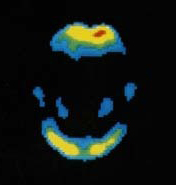By Peter J. Webner RT(N),CNMT with Tamar Thompson, MS, CCS-CCS-P
The Centers for Medicare and Medicaid Services (CMS) issued its proposed payment policy rules and regulations for Calendar Year 2014 on July 8, 2013. Upon initial review of the proposed regulations, my reaction was positive. The Hospital Outpatient Prospective Payment System (OPPS) rates for SPECT and PET, as well as Oncologic PET, received substantial proposed payment increase over CY 2013 payment rates.
However, as I read on, I quickly realized that the CMS is really proposing policies that ultimately lead to comprehensive Ambulatory Payment Classifications (APC) bundling for not only the 29 devices mentioned in the rule but, in effect, for almost all services provided in the OPPS care setting. The removal of status indicator X and the addition of status indicator Q1 along with the bundling of drugs that function as supplies (including stress agents), the collapse of five levels of Evaluation and Management (E/M) codes into one "G" nomenclature code, bundling of add-on procedure codes, and the bundling of laboratory services, could have devastating effects for the hospital community.



Ad Statistics
Times Displayed: 172891
Times Visited: 3132 For those who need to move fast and expand clinical capabilities -- and would love new equipment -- the uCT 550 Advance offers a new fully configured 80-slice CT in up to 2 weeks with routine maintenance and parts and Software Upgrades for Life™ included.
Although the bundling proposals are significant, the most concerning issue is that for the first time since the inception of the OPPS, CMS failed to release the data files to compliment their proposals, leaving the public with no way to replicate the proposal to determine the true value of the positive increases in payment or determine the negative impacts of the seven categories proposed for greater bundling.
Some of the immediate issues that I considered for the nuclear medicine community were:
—Bundling of the stress agents detracts focus from clinical decisions (i.e. efficiency and side effects) and instead limits provider and patient choice based upon financial incentives. Previously a hospital had the option to choose the most appropriate stress agent and be reimbursed for the full cost (plus 6% for pharmacy overhead) for that choice in addition to payment for supervision/interpretation of the stress study. Under this proposal, the agency will bundle all of these services into a single payment.
—The elimination of radiopharmaceutical to procedure edits means that hospitals are less likely to continue to fully report cost associated with nuclear medicine procedures thereby resulting in payment erosion over time.
—Packaging policies drive toward the use of generic drug products, and this concept might seem reasonable when you consider that the Technetium based SPECT Myocardial Perfusion Imaging is off-patent and now generic or PET-based FDG or NAF. One notable exception to the bundling concept for a product that is no longer on patent is Rb82, where manufacturing, distribution, or cost recovery is a challenge since every site bears fixed costs for the generator but has variable volumes.

